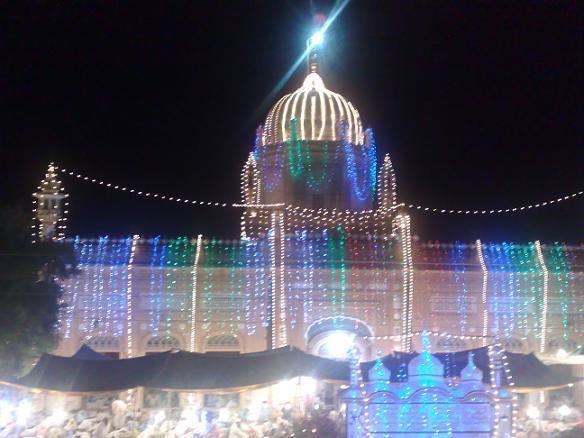Time zone PST (UTC+5) | Province Punjab Population 1,100 (1998) | |
 | ||
Sial Sharif is a village in the Sargodha District of Punjab, Pakistan. It is located in Sahiwal Tehsil and lies 48 km (30 miles) away from the city of Sargodha, about midway on the Sargodha-Jhang road. The local language is Punjabi.
Contents
Map of Sial Sharif, Pakistan
The village hosts the a shrine of Muhammad Shamsuddin Sialvi (1799–1883), popularly known as Pir Sial, who was a waliullah (Sufi saint) belonging to the Chishti order (Nizami branch). His successors (as Sufi masters in charge of the shrine), all of whom are believed to have reached the highest levels of sainthood (one of them is explicitly designated by the title Qutb-ul-Aqtab), are also buried in the same shrine.
Today the Khanqah (Zawya, i.e. Sufi convent) of Sial Sharif is counted among the foremost Chishti centres of the Punjab, and indeed of the whole Indian subcontinent. Many spiritual personalities are or have been associated with Sial Sharif. Most notably, Pir Meher Ali Shah of Golra Sharif, the famous saint of the 20th century, was a faithful murid (disciple) of Pir Sial of Sial Sharif. Hazrat Pir Syed Haider Ali Shah sb, astana Aalia Jalal-Pur Shareef, These two were most prominent mureed of Pir Sial Lajjpal also so many others like Pir Muhammad Karam Shah Al-Azhari of Bhera Sharif, Hazrat Molvi Abdul Ghani Chisti of Bareela Sharif and Pir Syed Rustam Ali Shah of Sarachha, Azad Kashmir.
To this day, the Islamic spiritual tradition is very much alive in this (Nizami) branch of the Chishti order. Its barakah (spiritual influence, blessing) is experienced by tens of thousands of disciples and visitors. Every Friday, scores of devotees travel long distances just to attend the Jumu'ah prayer there and obtain some blessings from the Holy Shrine.
Attached to the spiritual centre (referred to as Darbaar, i.e. court) at Sial Sharif there is also a religious school (madrasa). Many other religious schools and mosques, scattered throughout Pakistan, are affiliated to the Darbaar of Sial Sharif. The Darbaar at Sial Sharif is closely linked to many other spiritual centres, including the Darbar at Bhera Sharif.
Care of the shrine
After the death of Muhammad Shams Din, care of the shrine passed to Muhammad Din and, after his demise in 1909, to his son Muhammad Zia-ud-Din. It subsequently passed on to his eldest son Muhammad Qamar-ud-Din (7 July 1906 – 20 July 1981), president of the Sargodha branch of Muslim League who became famous for donating all his valuables to the Pakistani Army during the Indo-Pakistani War of 1965. Muhammad Qamar-ud-Din later, in 1970, became president of Jamiat Ulema-i-Pakistan and member of Islamic Ideology Council, in 1981 receiving Tamgha-e-Imtiaz (Medal of Distinction) from the President of Pakistan. The current caretaker (sajjada nashin) of the shrine is his eldest son Hamid-ud-Din who is credited with substantial development of the shrine.
